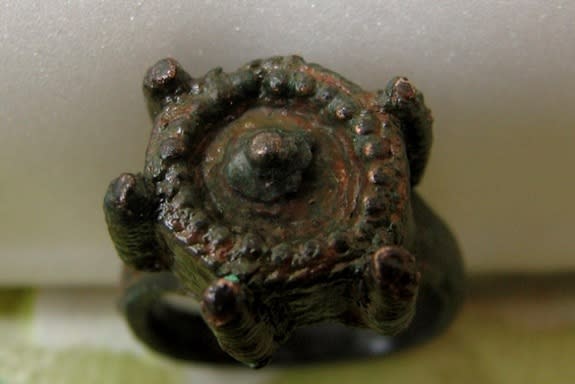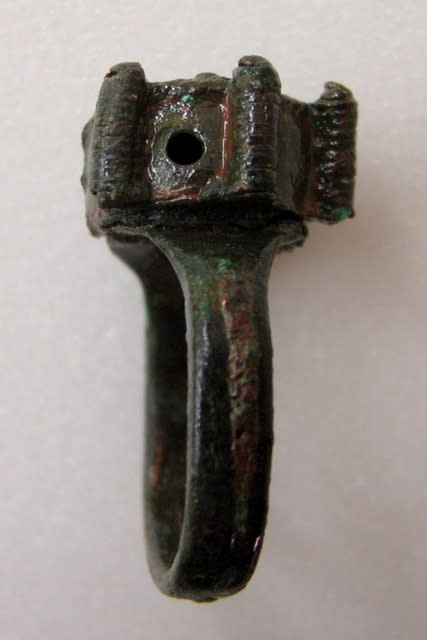Medieval Poison Ring Uncovered in Bulgaria
Archaeologists have discovered a ring with an inconspicuous cavity that they believe may have been used to hide poison for political murders in medieval Bulgaria.
The bronze ring, which is more than 600 years old, was found during excavations at the ruins of Cape Kailakra, where aristocrats of the Dobrudja region lived during the 14th century.
Local officials said more than 30 other pieces of jewelry have been found at the site — including gold ornaments, gold rings and pearl earrings — but none like the ring most recently uncovered. [Images: Viking Jewelry Revealed in Sparkling Photos]
It was exquisitely crafted and deliberately hollowed out, and may have been imported from Italy or Spain, said the dig leader Bonnie Petrunova, deputy director of Bulgaria's National Archaeology Museum.
Petrunova believes the ring would have been worn on the pinkie finger of a man's right hand. The hole would have allowed its wearer to sneakily pour poison into a glass with the flick of his finger, the archaeologist said in a statement from Bulgaira's Kavarna municipality.
Petrunova thinks the ring could be linked to Dobrotitsa, a noble who ruled the region in second half of the 14th century.
"This explains many of the unexplained deaths among nobles and aristocrats close to Dobrotitsa," local officials in Kavarna said.
Follow Megan Gannon on Twitter and Google+. Follow us @livescience, Facebook & Google+. Original article on LiveScience.com
Copyright 2013 LiveScience, a TechMediaNetwork company. All rights reserved. This material may not be published, broadcast, rewritten or redistributed.



